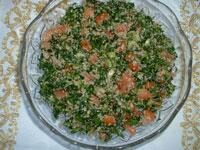Visit Historic Little Syria, New York at Arab American National Museum
Between 1880 and 1940, Arab immigrants arriving in New York City from the region then called Greater Syria (modern-day Syria and Lebanon) forged their new American identity around Washington Street in Lower Manhattan. Their entrepreneurial spirit transformed the neighborhood, which came to be known as Little Syria, into a thriving community lined with shops, restaurants and coffeehouses, each furnished with signs written in their native Arabic.
In Little Syria, just as in immigrant enclaves of all ethnicities, newly minted Americans simultaneously held dear their old-country traditions and embraced their new nation as they labored, raised their families, educated their children, formed religious and community organizations and gradually became part of the life of New York. Although razed to make way for the Brooklyn-Battery Tunnel and later the World Trade Center, the impact of Little Syria resonates in the contemporary Arab American community of New York and the dozens of similar communities and related institutions across the United States.
In the new traveling exhibition Little Syria, NY: An Immigrant Community’s Life & Legacy, the Arab American National Museum (AANM) resurrects this enclave that is all but lost to living memory. Little Syria, NY recognizes the neighborhood’s contribution to the city of New York, its connections to the Arab World, and its legacy across the U.S. The exhibition opens Friday, Dec. 7, 2012 and runs through Sunday, April 21, 2013 in the Main Floor Gallery at AANM, 13624 Michigan Ave. in Dearborn, Michigan. It is already scheduled for 2013 runs at a New York City venue located within Little Syria’s borders and a Minneapolis venue (details appear below).
Little Syria was home to literary greats Kahlil Gibran (1883-1931) (The Prophet, massively popular book of poetic essays published in 20 languages) and Ameen Rihani (1876-1940) (The Book of Khalid, the first Arab American novel) of the first Arab American literary society, The Pen League. Little Syria also saw the founding of early Arabic-language newspapers including Al-Hoda, the originator of the Arabic-language typeface for Linotype typesetting machines. New York’s first Arab Christian churches founded congregations there, as residents began new lives as peddlers, merchants, restaurateurs and textile workers, laying the foundation for generations to come.
“Many Arab American communities were established by peddlers and other merchants who journeyed from New York to Pennsylvania, Michigan, Iowa, Texas and California. Those new communities continued to do business with New York-based merchants, bankers, and publishers,” says AANM Researcher Dr. Matthew Stiffler. “And most Arab American churches owe their foundations to the early priests and bishops that began their ministry in New York City in the 1880s and 1890s.”
Among the notable businesses in Little Syria were Bardwil Industries, today the largest linen company in the U.S., and Germack Pistachio Co., today the oldest roaster of pistachios in the U.S. and product supplier for cable TV shopping channel QVC.
Among the images and artifacts that comprise Little Syria, NY are numerous historical photographs including several by the renowned American photographer Berenice Abbott (1898-1991) from her Changing New York Works Progress Administration (WPA)/Federal Art Project, shot between 1935-38. There is a first edition of Gibran’s beloved book The Prophet signed by the author, and a letter written by Gibran that has never before been on public display, on the subject of Syrian famine relief efforts in Boston. A vintage peddler’s trunk full of its original wares, samples of fine lace available to New York merchants from Syrian-run textile mills, even a fashionable women’s bed jacket by designer Odette Barsa will be on display. Visitors will also enjoy some of the sounds and scents of Little Syria inside the gallery.
As it remains for many immigrants today regardless of ethnicity/origin, life for the new citizens in Little Syria involved not only the pursuit of the American Dream, but also forced confrontation with some of the country’s harsher elements. “In the first decades of the 20th century, during Little Syria’s heyday, there was a prominent anti-immigrant movement in the United States,” says Matthew Stiffler of AANM. “In fact, in 1904 the future chairman of the U.S. Public Health Service called Syrian immigrants ‘human parasites.’ But Syrians and other immigrant groups in New York continued to thrive, despite the anti-immigrant movement.”
Following its AANM run, Little Syria, NY is currently scheduled to make the following stops:
May 4-26, 2013: 3LD Art + Technology Center (80 Greenwich St., New York, NY; 212.645.0374), located within the footprint of the former Little Syria neighborhood
Fall 2013 (exact dates TBA): Immigration History Research Center, University of Minnesota (Elmer L. Andersen Library, 222 21st Ave. S., Ste. 311, Minneapolis, MN; 612.625.4800)
Contact venues to confirm exhibition days, times, location. Visit www.arabamericanmuseum.org for updates on additional venues and related programs.
*********
Little Syria, NY: An Immigrant Community’s Life & Legacy was researched and produced by the Arab American National Museum. The exhibition was made possible in part by the Ford Foundation and the Arab American Community of New York.
The leadership and staff of the AANM are exceedingly grateful for the invaluable guidance provide by the New York-based Little Syria Exhibition Advisory Committee: Inea Bushnaq; Ralph and Melissa Coury; Mary Ann Haick DiNapoli; Paula Hajar; Linda Jacobs; Robert Madey.
The Museum offers Special Thanks to these individuals who provided vital assistance: Hani Bawardi; Ozge Dogan; Todd Fine; Sarah Gualtieri; Philip Kayal; Akram Khater; Joe Svehlak.


